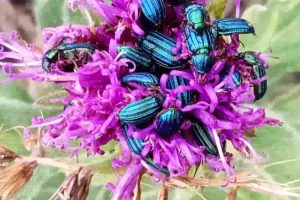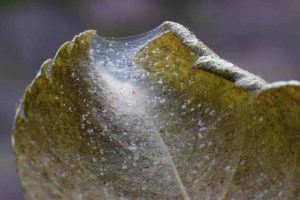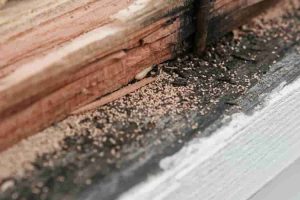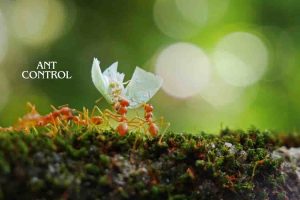Caterpillars can wreak havoc in our gardens, chewing through leaves and damaging plants. The most effective way to control caterpillar infestations is by using both natural and chemical solutions. For a natural approach, using products like EarthCare Natural Pyrethrum spray ensures we target the pests without harming beneficial insects or bees.

Another excellent method involves incorporating organic insecticides, such as those found in the Yates Natures Way Caterpillar Killer. This product is safe for use on vegetables, fruits, and herbs without harming pets. We can also employ physical barriers or traps to prevent caterpillar infestations from getting started.
By understanding these control methods, we can protect our gardens from severe damage. Exploring these options allows us to choose the best strategy for maintaining a healthy and productive garden space.
Identification of Common Caterpillar Pests

Recognizing caterpillar pests in our gardens involves understanding their physical traits, behaviors, and life cycles. This helps us implement effective control measures.
Morphological Characteristics
Caterpillar pests like the cabbage white butterfly caterpillar and the armyworm can be identified by their unique features. The green caterpillars of the cabbage white butterfly are about 30mm long and have a distinctive green hue. Their eggs are white to cream-colored, turning yellowish before hatching.
The lily caterpillar is easily recognized by its striking coloration. It’s often green with black and yellow stripes, making it stand out.
Armyworms are typically green, brown, or black with stripes running down their bodies. These caterpillars often have a smooth texture and are around 25 to 30mm long as mature larvae.
For moth larvae, like the Emperor Gum Moth Caterpillar, we observe large green bodies with spiny outgrowths. These larvae are bulky and can measure up to 100mm in length.
Behavioral Patterns
Caterpillars exhibit varied behaviors depending on their species. Cabbage white caterpillar larvae are usually found on leafy greens, feeding voraciously on the undersides of leaves.
Armyworms tend to target and march across large areas, consuming crops like corn and grains. They often feed at night, making them harder to spot during the day.
Lily caterpillars primarily attack lilies, eating the leaves and flowers extensively. This damage is often visible through chewed edges and holes in foliage.
The larvae of moths, such as the Emperor Gum Moth, feed on eucalyptus leaves. They move slowly and are often seen clinging to stems.
Lifecycle and Reproduction
Caterpillar pests have lifecycles that involve multiple stages: egg, larva, pupa, and adult. The cabbage white butterfly lays oblong eggs on the undersides of leaves. These eggs hatch into larvae within a week. The larval stage lasts for about 2-3 weeks before they pupate and transform into adults.
Armyworms have a rapid lifecycle, with eggs hatching in just a few days. The larval phase is usually about 2 weeks long, and they can breed multiple times a year.
Lily caterpillars and moth larvae follow similar patterns. Lily caterpillars lay eggs on the leaves and flowers, where larvae emerge and feed for several weeks.
The Emperor Gum Moth has a longer developmental period, with caterpillars feeding for several months before pupating. The adult moths emerge, mate, and restart the cycle.
Preventative Measures and Cultural Controls
Effective caterpillar pest control relies on good cultivation techniques, attracting natural predators, and using physical barriers and traps. Each method helps reduce the prevalence of caterpillars in our gardens.
Cultivation Techniques
Proper cultivation techniques play a crucial role in managing caterpillar populations. By rotating crops and growing pest-resistant varieties, we can disrupt the life cycle of caterpillars. Changing irrigation practices to avoid over-watering can also help. Over-watering can make seedlings more susceptible to pests, including caterpillars.
Healthy garden plants are less likely to be affected. We should use appropriate fertilisers to maintain strong, resilient plants. Practices such as removing plant debris and pruning damaged stems help reduce places where caterpillars lay eggs. Monitoring the garden regularly allows us to catch any early infestations.
Attracting Natural Predators
Natural predators, such as beneficial insects, are an excellent way to keep caterpillar numbers in check. Ladybugs, parasitic wasps, and birds often prey on caterpillar eggs and larvae. Introducing plants that attract these predators helps build a balanced ecosystem in our garden.
We can plant flowers like dill, fennel, and alyssum to attract ladybugs. Creating habitats for birds by putting up birdhouses or birdbaths is also beneficial. Maintaining a diverse garden encourages a variety of predators to settle. This helps keep caterpillar populations low and protects our garden plants.
Physical Barriers and Traps
Using physical barriers and traps is another effective strategy. Placing nets, floating row covers, or other barriers around plants prevents caterpillars from reaching them. This is especially useful for protecting young seedlings and vulnerable crops.
Sticky traps and pheromone traps can be set up to monitor and reduce caterpillar numbers. By regularly inspecting and maintaining these traps, we limit caterpillar reproductive cycles. Combining these methods creates an unfriendly environment for caterpillars. This reduces the need for chemical interventions and promotes a healthy garden ecosystem.
By integrating these cultural controls and preventative measures, we can protect our gardens efficiently and sustainably.
Biological and Chemical Control Methods
When dealing with caterpillar pests, we have two main strategies: biological and chemical control. Each offers unique benefits and challenges, and the choice often depends on the specific situation and environmental impact.
Natural Pesticides and Insecticides
Natural pesticides such as bacillus thuringiensis (Bt) and neem oil are popular choices for biological control. Bt, a soil bacterium, produces toxins harmful to caterpillars but safe for humans and animals. Products like Dipel contain Bt and can be sprayed on plants, where caterpillars ingest the bacteria and die shortly after.
Neem oil, derived from the neem tree, disrupts the hormonal balance of insects, making it hard for caterpillars to feed and breed. Another simple method involves using soapy water to suffocate caterpillars physically.
In each case, these biological controls aim to be effective while minimizing harm to beneficial insects and the environment.
Application Techniques
Applying these control methods correctly is essential for success. With Bt products like Dipel, it’s crucial to spray during the late afternoon or early evening. This is when caterpillars are most active and in contact with treated surfaces. For neem oil, thorough coverage of all plant surfaces ensures caterpillars cannot avoid contact.
Using soapy water involves mixing a mild soap solution and spraying directly onto caterpillars. Though less effective than the other methods, it can be a quick fix for small infestations.
Both biological and chemical methods require regular monitoring to determine effectiveness and adjust applications as needed. Judicious application helps us manage pest populations while protecting our crops and environment.
Monitoring and Maintenance for Long-Term Management
Effective caterpillar pest control requires consistent monitoring and maintenance. It’s crucial to identify infestations early, document changes, and use an integrated approach to manage caterpillar populations sustainably.
Routine Garden Inspection
Routine garden inspections are essential to detect early signs of caterpillar infestations. We should regularly check plant leaves, stems, and soil for signs of caterpillars or their droppings. Look for small holes in leaves, silk threads, and caterpillar eggs. Hand-picking caterpillars off plants can be an effective immediate control method. Using a flashlight during night inspections can also help as some caterpillars are nocturnal.
Inspecting the garden at least once a week helps us stay ahead of potential infestations. By keeping a vigilant eye, we can address issues before they become destructive to our plants. Keeping our garden’s health in check involves not only looking for caterpillars but also checking for beneficial insects that might help in controlling pest populations naturally.
Record-Keeping and Analysis
Keeping detailed records allows us to track pest populations and the effectiveness of our pest control strategies. We should document the dates of our inspections, areas affected, types of caterpillars found, and actions taken. This practice helps in identifying patterns and trends over time.
For example, noting the appearance of caterpillars with specific markings can be crucial in identifying the species and understanding its behavior. Analyzing this information can guide us in adapting our pest control measures. Sharing findings through a newsletter or local gardening group can also be valuable, as others may benefit from our experiences and insights.
Integrated Pest Management
Integrated Pest Management (IPM) combines multiple approaches to control caterpillar populations effectively. It emphasizes prevention through cultural practices like crop rotation and companion planting. Biological control methods, such as introducing natural predators like birds or beneficial insects, can also help reduce caterpillar numbers.
Minimal use of chemical pesticides is recommended. Instead, we can use organic options like Neem oil or Bacillus thuringiensis (Bt) which are less harmful to the environment. Regular evaluation and adaptation of these methods ensure long-term success. By integrating these strategies, we can maintain a healthy garden while minimizing the need for intensive pesticide use.
By implementing these practices, we ensure our gardens remain productive and less prone to the destructive impacts of caterpillar infestations. The key is sustained vigilance and adaptability in our pest management approach.
On-Time Service

5 STAR SERVICE BASED ON 100+ GOOGLE REVIEWS
PET & FAMILY FRIENDLY TREATMENT

ALL YEAR-ROUND PROTECTION
Take Back Control Now
8
REASON TO CHOOSE SAFE PEST CONTROL
- Guarantee protection all year-round
- 30 Years Collective Experience
- An impeccable reputation across Sydney's Suburbs
- Certified treatments & written Warranty On all work carried out
- Family Owned & Operated
- Rated #1 Pest Control In Sydney NSW
- No Mess, No Smell
- Family & Pet Friendly Treatments
REQUEST A QUOTE









